The summer before last (2011), I spent some time in Wyoming on an energy resources field trip run by Sheridan College, and one stop we made was to look at “oil shale” (really kerogen-rich marlstone) of the Green River Formation, an Eocene lake deposit in southwestern Wyoming. The oil shale is exposed on the east side of the White Mountain escarpment in the Green River Basin. Here’s the view to the south:
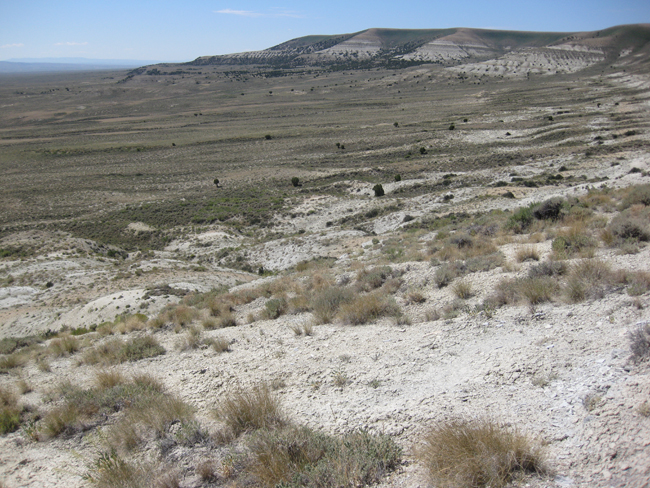
Turn around, and you’ll see that there is a view of the Killpecker Dunes and the Boar’s Tusk to the northeast:
The Boar’s Tusk is a high-potassium, low-silica volcanic neck, with the rock type being “wyomingite.” Apparently, it formed from mantle-derived melt, so is a site for diamond prospecting, and some diamonds have been found. It’s Pleistocene in age, about 2 million years old.
I’ve shown you a horned lizard from this site previously, and also linked to a couple of GigaPans I shot there:
But today I’d like to show you what we were really there to look at.
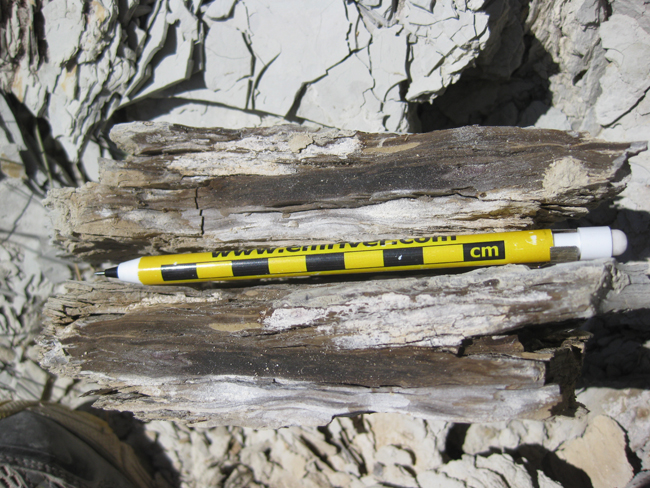
That’s what oil shale looks like – organic-rich fissile rock made of calcite and clay. The U.S. has more oil shale than anybody. The Green River Formation has been described as “the Saudi Arabia of oil shale.” There are three members to the Green River Formation. From oldest to youngest, they are the Tipton Shale, the Wilkins Peak Member, and the Laney Member. The Tipton and Laney both record freshwater conditions, while the intervening Wilkins Peak was deposited under saline and hypersaline conditions: evaporates, trona, and oil shale with casts of halite and shortite. Plus it has stromatolites! These photosynthetic-microbial mats thrived when the water got really salty, because it meant their chief “predators,” grazing snails, weren’t able to survive and mow them down. Here’s one:
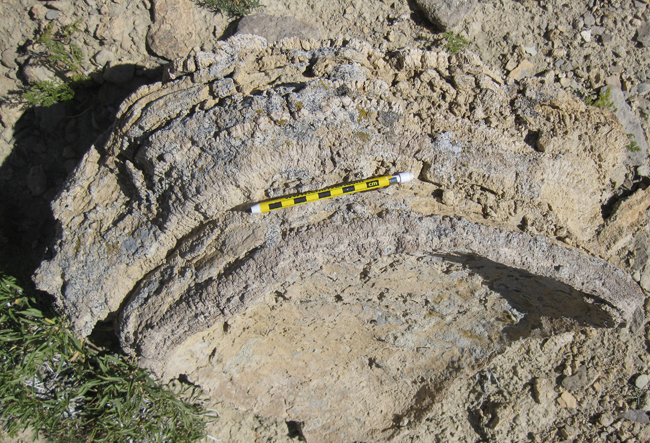
The stromatolites ranged in size from ~fist sized to about a meter across. They were exposed in cross-section, as you see above, but mostly in three-dimensions:


Oh, yeah!
Screw the oil shale; the stromatolitic layer was where I wanted to spend my time.
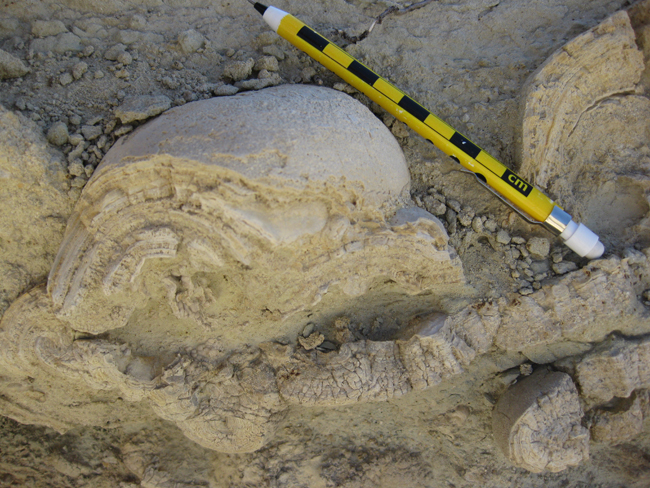
I was delighted at the little papilliform bumps on each stromatolite – like taste buds on a tongue…
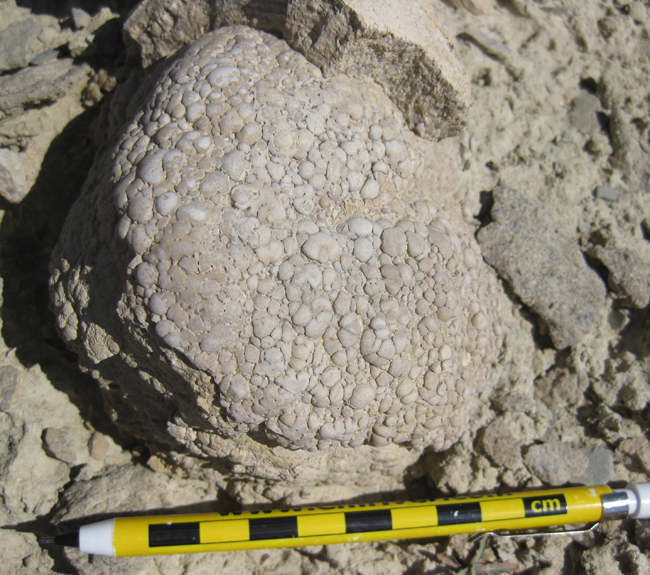
This site demonstrated better than any other I’ve seen the multilayered, encrusting, convex-upward shapes of these distinctive fossils:
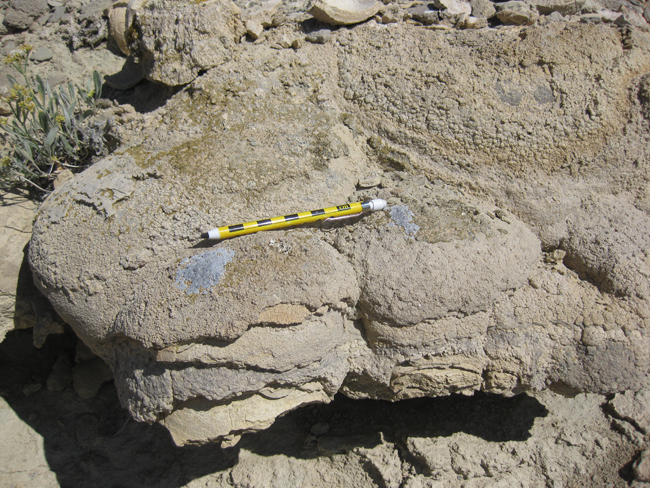
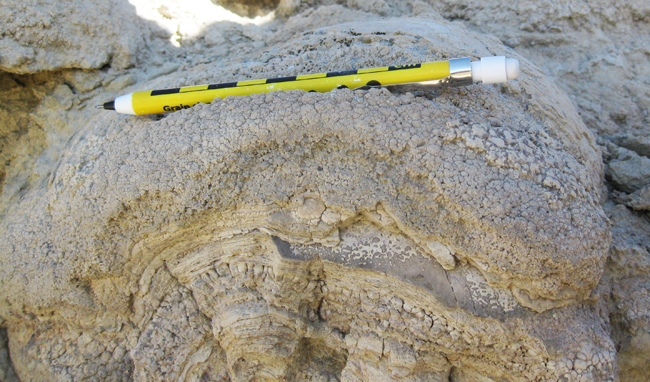
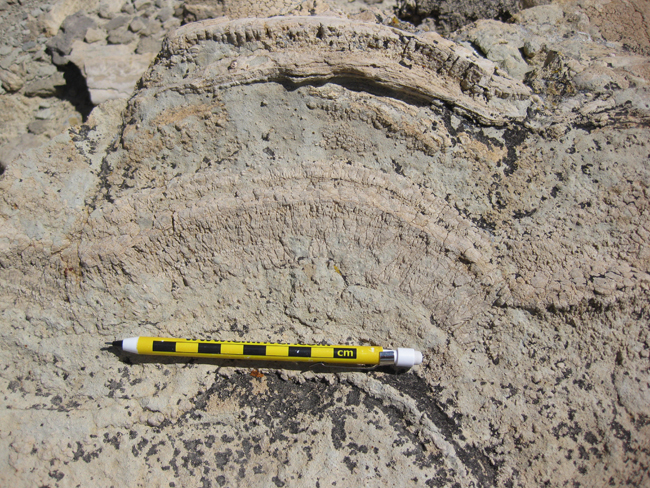
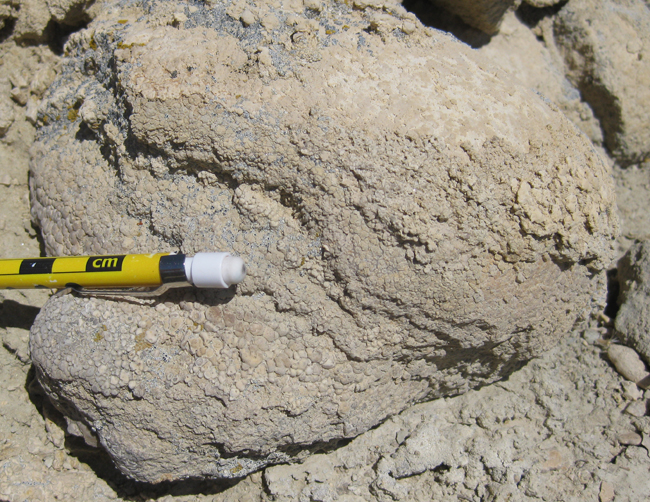
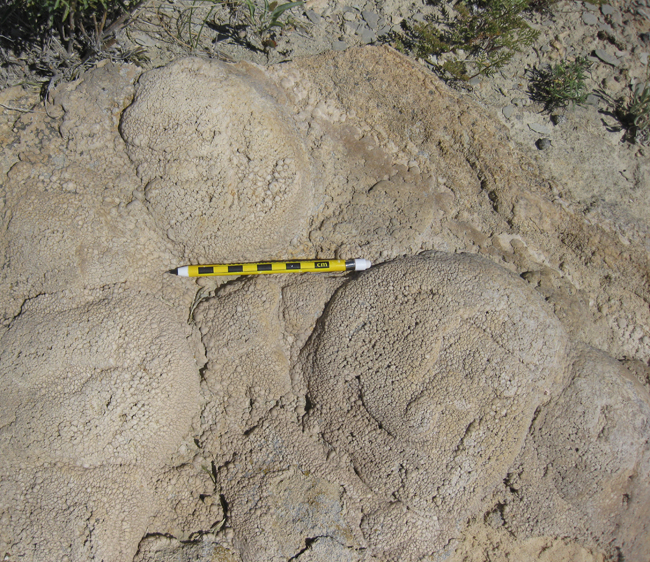
Look at the papillae on this one!
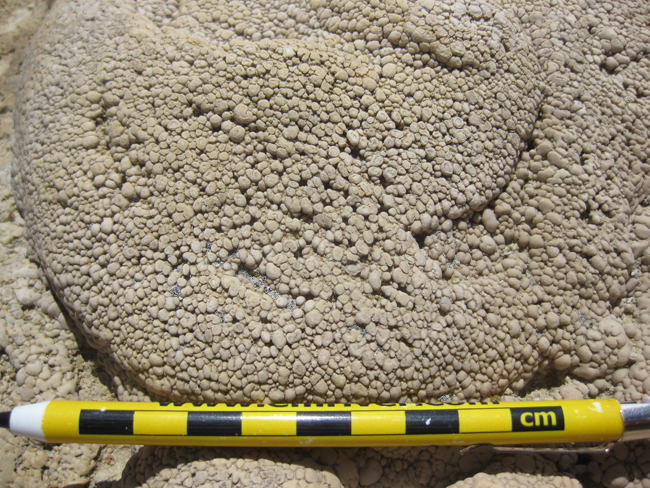
Gorgeous rock.
On our way out, trip leader Tom Johannesmeyer toted a crate full of oil shale back down to our bus (just visible in the middle distance):
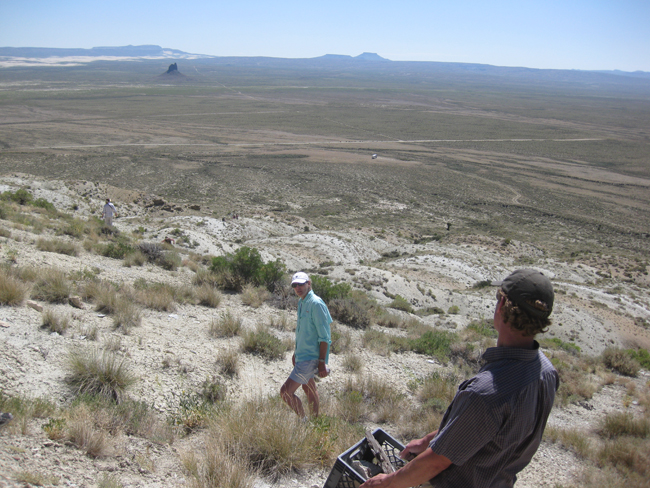
I got a few pieces of oil shale, too, but you’ll doubtless not be surprised to learn that I was more interested in collecting a few samples of these sweet little 3D stromatolites!


Do you perchance know the stratigraphic position (or an outcrop location) of the Mahogany Ledge? It is reputedly the richest layer of oil shale within the Green River Formation.
Nope, I don’t. Sorry!!
Callan, I am beginning to plan a trip to Wyoming and Utah for next summer. I saw your post on the Green River Stromatolites and was wondering if you have more specific directions or coordinates on the location. Thanks for your assistance.
Dennis
Hi Dennis,
Here’s the lat/long:
41.961731 N, -109.247284 E
Have fun visiting!
C